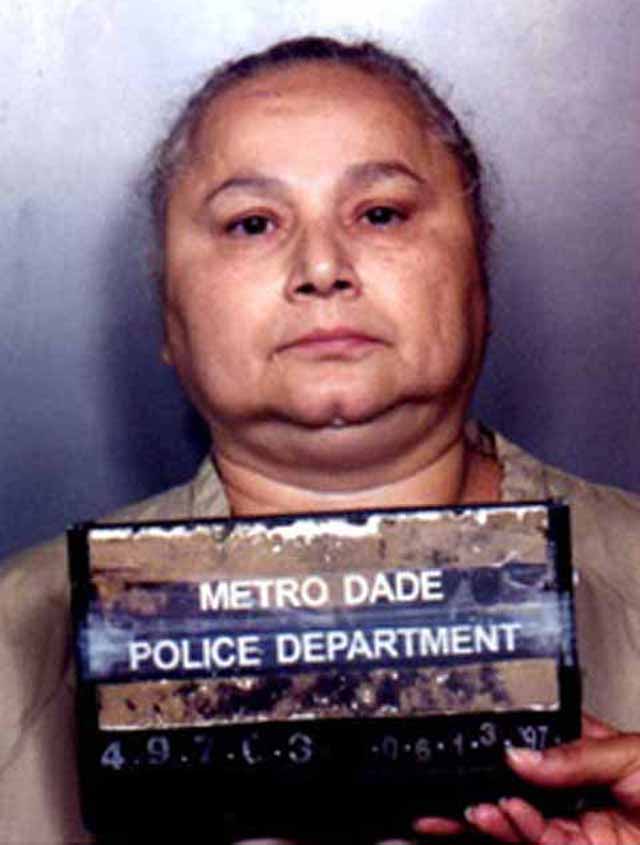Griselda Blanco Restrepo, also known as the “Cocaine Godmother” or “Black Widow,” was a notorious Colombian drug lord who played a central role in the violent drug wars of Miami during the 1970s and 1980s. Born on February 15, 1943, in Santa Marta, Colombia, Blanco grew up in poverty and was exposed to a life of crime from an early age. Throughout her criminal career, she built a vast drug empire, smuggled tons of cocaine into the United States, and orchestrated numerous murders.
Griselda Blanco’s childhood was marked by poverty and hardship. While there is some confusion about her exact birthplace, she was baptized in Santa Marta, Colombia. Growing up, Blanco was exposed to a criminal lifestyle from an early age. Some accounts suggest that at the age of 11, she was involved in the kidnapping of a boy from a wealthy family. When the family refused to pay the ransom, Blanco allegedly shot the child. This incident set the stage for her future criminal activities.
Blanco’s life of crime continued to escalate as she became a pickpocket and allegedly engaged in prostitution. She married a small-time criminal as a teenager and had three children with him. However, the couple eventually divorced, and Blanco was rumored to have ordered his murder. In the early 1970s, Blanco began a relationship with Alberto Bravo, a drug trafficker, and eventually married him. It was through Bravo that she became deeply involved in the cocaine trade.
With New York City as their base, Griselda Blanco and Alberto Bravo established a highly profitable cocaine operation. Blanco’s ingenuity played a significant role in their success. She designed lingerie with secret compartments to smuggle drugs into the United States, allowing them to bypass law enforcement. The couple’s operation thrived, earning them immense wealth and power. However, their success was short-lived.
Facing drug charges in the United States, Blanco fled back to Colombia in 1975. Suspecting that Bravo was stealing money from their operation, she engaged in a shoot-out with him, resulting in his death. Blanco’s reputation as the “Black Widow” continued as she later had her third husband killed as well. Despite these violent acts, Blanco’s thirst for power and control was far from quenched.
By the late 1970s, Griselda Blanco had relocated to Miami, where she solidified her position as the “Godmother of Cocaine.” In her quest to eliminate rivals and maintain her dominance, she unleashed a wave of violence that engulfed the city. Known as the Cocaine Cowboy Wars, this period was characterized by numerous murders and acts of brutality.
Blanco’s ruthlessness knew no bounds. She allegedly ordered the killings of her competitors, often carried out by gunmen on motorcycles—a method she was said to have pioneered. The brazenness of these acts shocked the public, as many of the murders took place in broad daylight. Blanco’s empire thrived, smuggling over three tons of cocaine into the United States each year and amassing a staggering $80 million per month.
Despite her cunning and power, Griselda Blanco’s reign eventually came to an end. In 1984, fearing for her life, she relocated to California. However, the following year, she was arrested and extradited to New York to face the drug charges from 1975. In 1985, Blanco was found guilty and sentenced to the maximum of 15 years in prison. Yet, even behind bars, her influence persisted.
While serving her sentence, Blanco faced additional charges for multiple murders. One of her trusted hitmen, Jorge Ayala, struck a deal with prosecutors and testified against her. However, the case collapsed due to a scandal involving phone sex between Ayala and secretaries from the prosecutor’s office. Blanco ultimately pleaded guilty to three counts of second-degree murder in 1998, receiving a concurrent sentence of 20 years.
After serving a portion of her sentence, Griselda Blanco was released from prison in 2004 due to health issues. She was subsequently deported back to Colombia, where she lived a relatively quiet life in Medellín. Blanco’s criminal activities came to an end, but her notoriety and infamy persisted.
In 2012, tragedy struck Griselda Blanco. While leaving a butcher shop in Medellín, she was gunned down by a hitman on a motorcycle—a method reminiscent of her own violent tactics. Her death marked the end of an era, leaving behind a complex legacy of crime, power, and ruthlessness.
Griselda Blanco’s larger-than-life persona and criminal exploits captured the imagination of writers, filmmakers, and musicians. Her story has been featured in numerous documentaries, series, and films. Notably, the documentary “Cocaine Cowboys” shed light on her reign, while the TV series “Cocaine Godmother” portrayed her life, with Catherine Zeta-Jones in the lead role. Blanco’s influence even extended to the world of music, with references to her in rap songs by artists like Meek Mill and Nicki Minaj.
Griselda Blanco, the infamous Cocaine Godmother, left an indelible mark on the world of drug trafficking and organized crime. Her rise to power, violent reign, and ultimate downfall captivated the public’s attention and inspired numerous works of art. While her criminal activities were marked by brutality and ruthlessness, they also highlighted the gender barriers she shattered in the male-dominated drug trade. Griselda Blanco’s story serves as a chilling reminder of the dark side of human nature and the lure of power and wealth.
